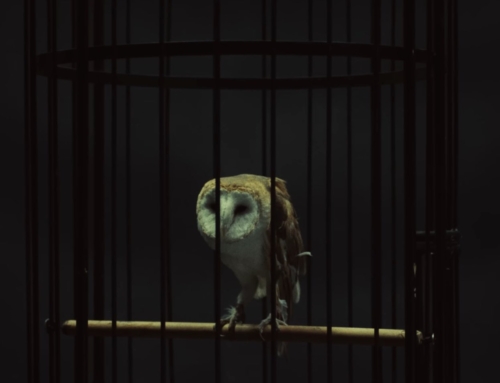Justin Bieber’s planning a comeback, and is letting everyone know it. If you’ve forgotten, the teen pop star behind hits like “Baby” and “Boyfriend” tarnished his image over the past two years: The kid with the swept hair and high-pitched voice transitioned into a young adult that throws eggs at his neighbor’s house, gets into car accidents, hangs out at brothels, and mistreats his pets. And with age, the Biebs hasn’t made a bonafide hit since 2012 – kind of an eternity for a pop star’s brief career.
It’s not that the Canadian-born singer wasn’t making music – it’s just that his personal life overshadowed a series of singles in the second half of 2013 and a compilation album called Journals. His sound shifted toward R&B slow jams – great, if it were 1998 – and most except the die-hard fans didn’t take notice. First Music Monday single “Heartbreaker” finished at No. 13 on the Billboard Hot 100, while the last few slipped down lower and lower. The last few, “PYD,” “Confident,” “Change Me,” and “Roller Coaster,” didn’t even crack the top 40.
But Bieber’s got a plan. Being dated doesn’t cut it, and now, based on a recent radio interview, he has Diplo and Skrillex on his side.
On one hand, Bieber and likely his management team are pulling from the same bag of tricks: Get the kid to collaborate with someone well known, and a successful single’s on the way. In the late aughts, this was rappers, and now, it’s a couple of EDM guys who had a successful album.
So far, listeners have gotten a taste with new single “Where Are Ü Now?,” which peaked on the Billboard Hot 100 at No. 64 – about what you should expect from Bieber these days. However, as a predictor for a stronger hit, Jack Ü’s debut Skrillex and Diplo Present Jack Ü reached No. 26 on the Billboard 200 – not a bad aspiration for a pop singer who hasn’t put out an official album in three years.
So, as a track, how does “Where Are Ü Now?” stack up? Not a masterpiece but not horrible, either, it’s in the pantheon of dance-influenced singles that let the producers’ abilities shine. Bieber, himself, isn’t distinctive – it seems that Diplo and Skrillex give him that interchangeable dance music vocal quality – but the track’s string hook is memorable enough.
But Bieber’s immediate aspirations aside, his announcement indicates just how far dance music producers in pop music have come. It was just 2009 when David Guetta shot to stardom with a Black Eyed Peas collaboration – something, frankly, that wouldn’t have been possible if Guetta continued to work with dance music singers like Barbara Tucker and Chris Willis.
The Guetta formula worked for a while – put a pop star on a track, and a dance music producer becomes a recognizable name. The French DJ continued to play this game with 2012’s Nothin’ But The Beat, but toned it down with last year’s Listen. However, just because Guetta stepped away, that doesn’t mean the approach has gone out of favor: The past year has seen Avicii work with Robbie Williams, Zedd with Selena Gomez, Ariana Grande, and Lady Gaga, and Madonna with Diplo and Avicii, all with modest success.
Pop stars and their management teams, on the other hand, don’t seem to be pulling the “We’re doing you a favor” card anymore. Instead, EDM symbolized modernity and a club hit, and getting the right producer on a track can transform a middling or fading pop star into something golden and legit.
Take the case of Lana Del Rey in the U.S. market. The singer born Lizzy Grant found success with her albums, but singles fizzled on the Billboard Hot 100: debut “Video Games” emerged at No. 91 and “Young and Beautiful” became sort of successful because of its Great Gatsby tie-in. It wasn’t until Cedric Gervais did a remix of “Summertime Sadness” that Del Rey became someone to notice.
Gervais seems like one of the least-likely producers to move Del Rey beyond her SNL fail infamy. Unlike someone like, say, Avicii or Zedd, Gervais’ dance music career is more traditional. Starting as a Paris club DJ, he moved to Miami in the late ‘90s, released a few mix albums in the early ‘00s, and, within more recent years, had original single “Molly” reach No. 5 on the U.K. Dance chart and No. 26 on the U.K. singles chart – not exactly a dependable hitmaker from an American perspective.
But the somewhat generic EDM sound coupled with Del Rey’s distinctive voice seemed to connect with listeners – pop enough for the radio and something you can dance to.
Others in the pop music field started to acknowledge this approach, working with established dance producers to save their careers. Puff Daddy attempted to rebuild his credibility as a rap performer, after Diddy Dirty Money came and went, by collaborating with Guy Gerber – a known underground performer. Yet, audiences didn’t latch onto 11:11 – too clichéd for the underground, and far too obscure for mainstream audiences.
Britney Spears’ team went with this model for 2013’s Britney Jean, by enlisting Sebastian Ingrosso, Otto Knows, and Nicky Romero, along with David Guetta and Diplo, for production duties. But while “Work B-tch” had some success as a pop single and club track, Britney Jean wasn’t marketed well: Dance music fans didn’t know these well-known producers were associated with the album, while Spears, in her permanent glass-eyed state, talked about how the album was more “personal.” Fans likely expected something stripped down and raw – not a dance album.
Madonna, too, counted on this formula for both MDNA and Rebel Heart, the former featuring the Benassi Bros. and Martin Solveig and the latter prominently including Avicii and Diplo. Both albums have done moderately well, and considering Madonna’s post Confessions on a Dance Floor output has involved latching onto the latest trends, she’s managed to stay relevant to a degree.
Pop stars often have been producers’ playthings – Madonna’s career, from working with Shep Pettibone to William Orbit and, later, Jacques Lu Cont, exemplifies this notion perfectly. And while long-time dance music fans disparage the dance-to-pop trajectory of EDM, this trend shows that EDM producers are starting to control the direction of the pop music landscape, rather than being a single, isolated facet moving with the industry’s arbitrary tides.




